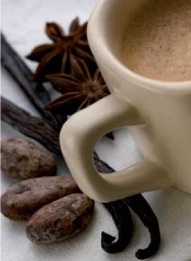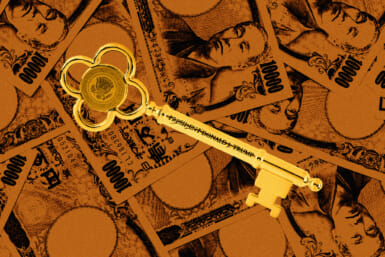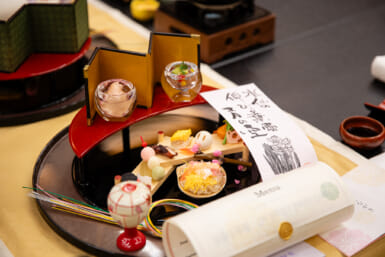by Elise Mori
Sweet, melting, satisfying and full of creamy deliciousness, chocolate’s near universal appeal is the best ending to any meal, an instant pick-me-up, a form of fetishism and of physical addiction.
It’s enduring fascination keeps it in the news, and the experts are relentlessly locked in debate as to whether the hell it’s good or bad for you. Historically, at least, the latest archaeological finds tell us that the first known use of chocolate was by the Maya in 600BC, and by 500AD was a staple crop and even a unit of currency in the Meso-American basin. A bitter drink which mixed cocoa beans with maize was known as ‘chocolatl’, and whole pods of cacao (which contain the cocoa beans) were also used as part of the rituals surrounding human sacrifice. Montezuma II is reported to have drunk up to 50 cups a day, and by this expedient was able to be a good husband to his many wives and concubines, apparently. The Japanese first saw chocolate at a Western style shop in Tokyo in 1878, although at that time was not popular due to it’s high price. It wasn’t until the 1920s when a chocolate industry was started by Moringa & Co., and Meiji Seika Kaisha.
And what of its reported health benefits, scientific fact or industry hype? You might as well ask: what is light, particle or wave? Pure cocoa mass contains copper, which is associated with many types of benign or malignant tumours, haemangioma, an, etc., while milkier, sweeter chocolate carries the health risks of high fat and sugar content food.
Conversely, chocolate contains, among other things, the antioxidants bioflavonoid and epicatechins, both of which show apparent activity against cancers and other diseases. In 2007 the Linus Pauling Institute found that the five percent of the bioflavonoids that are actually absorbed by the body are flushed away again as foreign particles, but in the metabolising and expelling process, mutagens and carcinogens (mutations which can lead to cancer) are flushed away at the same time.
Also last year, Norman Hollenberg, professor of medicine at Harvard Medical School, found that the epicatechins in chocolate can reduce the risk of four of the major health problems; strokes, heart failure, cancer, and diabetes. He studied the Kuna people in Panama, who drink up to 40 cups of cocoa a week, and found that the prevalence of the “big four” is less than 10 percent. Another recent study conducted by the National Institute for Public Health and the Environment in Bilthoven, Amsterdam, studied how cocoa affected the mortality of 1,000 elderly Dutch male subjects. It found the highest cocoa consumers had a 50 percent decreased risk for cardiovascular mortality. “In this new study,” says Catherine Neto, from the University of Massachusetts at Dartmouth “the most benefit was seen in the group that consumed the dark chocolate.”
So, dark chocolate it is then; in small quantities and incidentally available all over Japan, is Balance’s No Sugar Added 72% with Cocoa Nibs. But if you prefer sweeter creamier milk chocolate, try whisking up your hot chocolate with low fat or soy milk, and with a grinding of nutmeg and brown sugar. You could also try the Cardamom and Orange Flower Water Chocolate Truffles on the www.waitrose.com site.
Chocolate, it has to be good for us…doesn’t it?









